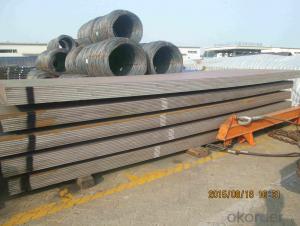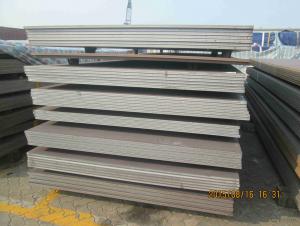Hot Rolled Carbon Steel Plates made in China
- Loading Port:
- China main port
- Payment Terms:
- TT OR LC
- Min Order Qty:
- 500 m.t.
- Supply Capability:
- 20000 m.t./month
OKorder Service Pledge
OKorder Financial Service
You Might Also Like
Product Description:
OKorder is offering Hot Rolled Steel Plates Steel Sheets made in China at great prices with worldwide shipping. Our supplier is a world-class manufacturer of steel, with our products utilized the world over. OKorder annually supplies products to African, South American and Asian markets. We provide quotations within 24 hours of receiving an inquiry and guarantee competitive prices.
Product Applications:
Hot Rolled Steel Plates Steel Sheets made in China are ideal for structural applications and are widely used in construction,machinery manufacturing, container manufacturing, shipbuilding, bridge construction. Can also be used to manufacture a variety of containers, the furnace shell, furnace plate, bridge and vehicle static steel plate, low alloy steel plate,shipbuilding plate, boiler plate, pressure vessel plate, pattern plate, tractor parts, automobile frame steel plate and welding components.
Product Advantages:
OKorder's Hot Rolled Steel Plates Steel Sheets made in China are durable, strong, and wide variety of sizes.
Main Product Features:
· Premium quality
· Prompt delivery & seaworthy packing (30 days after receiving deposit)
· Corrosion resistance
· Can be recycled and reused
· Mill test certification
· Professional Service
· Competitive pricing
Product Specifications:
Thickness | 2-100mm |
Width | 1250mm,1500mm,1800mm,2000mm.,2500mm or as required |
Length | 2000-12000mm |
Standard | AISI, ASTM, BS, DIN, GB, JIS |
Material | A36,SS400,SPCC,SPHC, Q195, Q 235,Q345 |
Tehnique | Hot rolled;cold rolled |
Payment | TT ,L/C |
Packing | Standard seaworthy packing or as required |
Market | Mild east, North/South America, Europe, Asia,Africa etc |
Certificate | BV,SGS,MTC |
Delivery time | Within 7-10 days |
FAQ:
Q1: Why buy Materials & Equipment from OKorder.com?
A1: All products offered byOKorder.com are carefully selected from China's most reliable manufacturing enterprises. Through its ISO certifications, OKorder.com adheres to the highest standards and a commitment to supply chain safety and customer satisfaction.
Q2: How do we guarantee the quality of our products?
A2: We have established an advanced quality management system which conducts strict quality tests at every step, from raw materials to the final product. At the same time, we provide extensive follow-up service assurances as required.
Q3: How soon can we receive the product after purchase?
A3: Within three days of placing an order, we will arrange production. The normal sizes with the normal grade can be produced within one month. The specific shipping date is dependent upon international and government factors, the delivery to international main port about 45-60days.
Images:
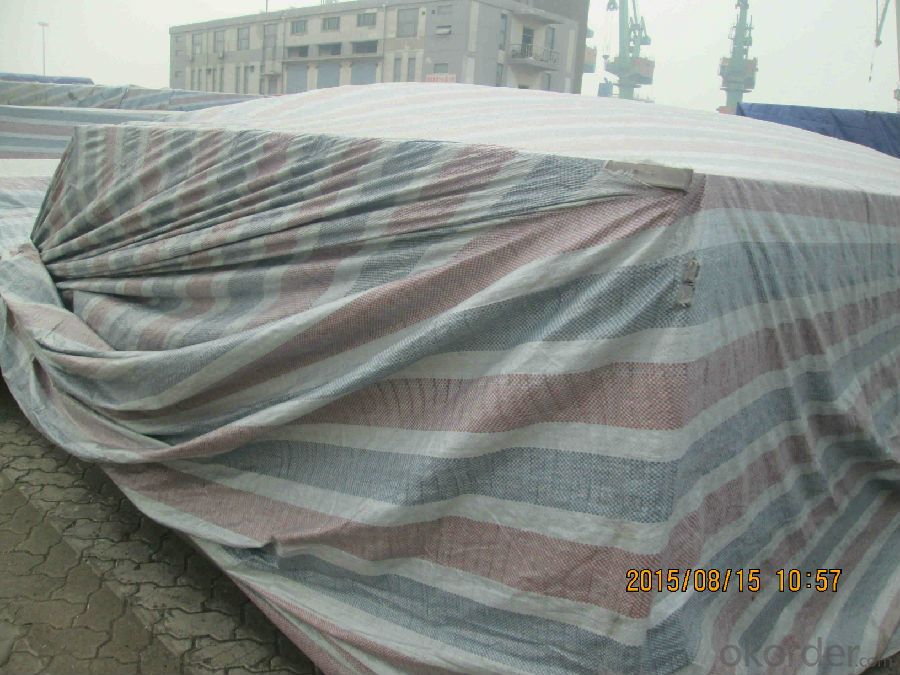
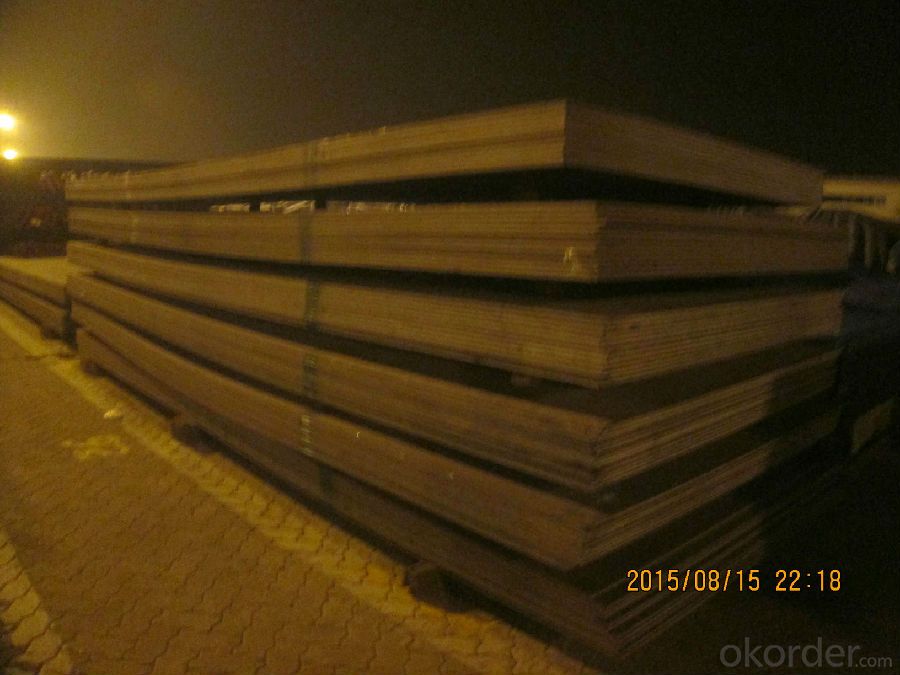
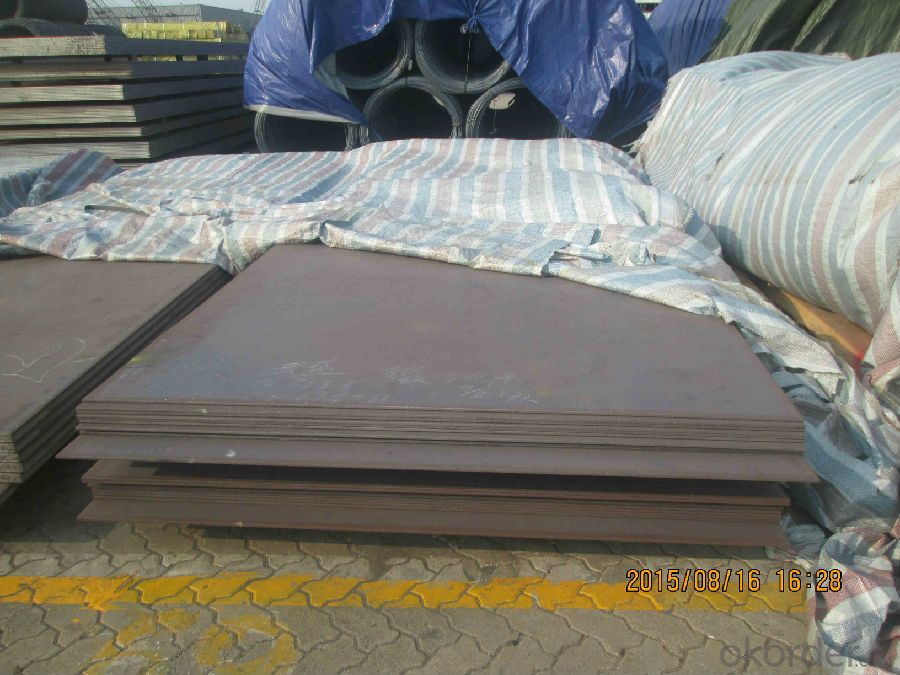
- Q:What is the aging property of steel plates?
- Timeliness refers to the change in performance with time.
- Q:What's the difference between hot-rolled seamless steel tube and cold-rolled seamless steel tube?
- Cold rolled seamless steel pipe (DIAL) in general, steel pipe for low and medium pressure boiler tube, high-pressure boiler steel pipe, alloy steel pipe, stainless steel pipe, oil cracking tube and other steel tube, including carbon thin-walled steel, alloy thin-walled steel, stainless steel, thin steel tube.
- Q:Can steel sheets be used for construction formwork or molds?
- Yes, steel sheets can be used for construction formwork or molds, although they may not be as commonly used as other materials such as plywood or timber. Steel sheets are durable, strong, and can provide a smooth and even surface for casting concrete. They are particularly suitable for large-scale construction projects where formwork needs to withstand high pressures and loads. Steel sheets can be custom-designed and fabricated to meet specific project requirements, offering flexibility in shape, size, and configuration. However, it is important to consider the cost, weight, and availability of steel sheets compared to other formwork materials before making a decision.
- Q:Are steel sheets resistant to high-pressure environments?
- Yes, steel sheets are generally resistant to high-pressure environments. Steel is known for its excellent strength and durability, allowing it to withstand high pressures without deformation or failure. It is often used in various industries, including construction, oil and gas, and aerospace, where it is exposed to extreme pressures. However, the specific resistance of steel sheets to high-pressure environments can vary depending on the grade and thickness of the steel.
- Q:What is the hardness of the steel sheets?
- The specific grade and treatment of steel can cause variations in the hardness of steel sheets. The Rockwell hardness scale is commonly used to measure the resistance of steel sheets to indentation. The hardness of steel sheets can vary greatly, ranging from soft to extremely hard, and is influenced by factors like carbon content, alloying elements, and heat treatment methods employed in manufacturing. When choosing steel sheets, it is crucial to consider the intended application and desired properties, as the hardness can impact wear resistance, strength, and machinability.
- Q:What is the maximum temperature that steel sheets can withstand?
- The maximum temperature that steel sheets can withstand depends on the specific type and grade of steel being used. However, in general, most steel sheets can withstand temperatures up to around 1000 degrees Celsius (1832 degrees Fahrenheit) before they start to lose their structural integrity and strength.
- Q:How do steel sheets perform in corrosive environments like saltwater?
- Steel sheets perform well in corrosive environments like saltwater due to their inherent resistance to rust and corrosion. This is primarily because of the presence of chromium in the steel, which creates a protective layer of chromium oxide on the surface of the metal. This layer acts as a barrier and prevents the steel from coming into direct contact with the corrosive elements in saltwater, thereby minimizing the risk of corrosion. However, it is important to note that while steel sheets have good resistance to saltwater corrosion, they are not entirely immune to it. Prolonged exposure to saltwater can still cause some level of corrosion, especially in the presence of other factors such as high temperatures, abrasion, or impurities in the water. To enhance the performance of steel sheets in saltwater environments, various protective coatings can be applied. These coatings, such as paint, galvanization, or epoxy, provide an additional layer of protection to the steel, further minimizing the risk of corrosion. Regular maintenance and inspection are also essential to ensure the long-term performance of steel sheets in saltwater environments. This includes cleaning the surface, removing any accumulated salt or debris, and repairing any damaged or compromised areas of the protective coating. Overall, while steel sheets have good resistance to corrosion in saltwater environments, it is crucial to take proper precautions, such as using protective coatings and regular maintenance, to ensure their optimal performance and longevity.
- Q:What are the different types of surface patterns available for steel sheets?
- There are several different types of surface patterns available for steel sheets, each offering unique properties and appearances. Some of the most common surface patterns include: 1. Smooth: Smooth steel sheets have a flat and even surface without any visible patterns or textures. They are often used in applications where aesthetics are not a priority, but a smooth surface is necessary for functionality. 2. Diamond: Diamond pattern steel sheets have a raised diamond-shaped pattern on the surface. This pattern provides excellent slip resistance, making it suitable for flooring, stairs, and other areas where grip is important. It also adds a decorative touch to the steel sheet. 3. Checkered: Checkered steel sheets have a grid-like pattern consisting of alternating raised and recessed squares or rectangles. This pattern enhances slip resistance and is commonly used in industrial and transportation applications, such as truck beds, loading ramps, and walkways. 4. Embossed: Embossed steel sheets have a textured pattern that is pressed or rolled onto the surface. This pattern can be various designs, such as a wood grain, leather texture, or geometric shapes. Embossed steel sheets are often used in interior and architectural applications to provide a decorative and tactile element. 5. Perforated: Perforated steel sheets have evenly spaced holes or perforations on the surface. These holes can be of different shapes and sizes, allowing for air, light, and sound to pass through. Perforated steel sheets find applications in industries such as filtration, ventilation, and acoustic control. 6. Brushed: Brushed steel sheets have a brushed or satin-like finish that is achieved by mechanically polishing the surface in one direction. This creates a linear pattern that gives the steel sheet a sleek and modern appearance. Brushed steel sheets are commonly used in architectural and decorative applications, such as wall panels and kitchen appliances. 7. Rustic: Rustic steel sheets have a weathered or aged appearance, often resembling rusted or patinated metal. This surface pattern is achieved through various techniques, such as chemical treatments or specialized coatings. Rustic steel sheets are popular in architectural and interior design for their unique and industrial aesthetic. These are just a few examples of the different types of surface patterns available for steel sheets. The choice of pattern depends on the desired functionality, aesthetics, and specific requirements of the application.
- Q:Can the steel sheets be cut easily?
- Yes, steel sheets can be cut easily with the right tools and techniques. Steel is a strong and durable material, but it can be cut using techniques such as shearing, sawing, or using plasma or laser cutting machines. The ease of cutting steel sheets also depends on their thickness and the specific type of steel being used. Thinner sheets are generally easier to cut than thicker ones. Additionally, using appropriate cutting tools and following proper safety measures can ensure a smooth and efficient cutting process.
- Q:What are the environmental impacts of steel sheet production?
- The environmental impacts of steel sheet production include carbon emissions from the burning of fossil fuels during the manufacturing process, the consumption of large amounts of energy and water, and the generation of waste and pollutants such as particulate matter, sulfur dioxide, and nitrogen oxides. Additionally, the extraction of raw materials for steel production, such as iron ore and coal, can lead to deforestation, habitat destruction, and soil erosion.
1. Manufacturer Overview |
|
|---|---|
| Location | |
| Year Established | |
| Annual Output Value | |
| Main Markets | |
| Company Certifications | |
2. Manufacturer Certificates |
|
|---|---|
| a) Certification Name | |
| Range | |
| Reference | |
| Validity Period | |
3. Manufacturer Capability |
|
|---|---|
| a)Trade Capacity | |
| Nearest Port | |
| Export Percentage | |
| No.of Employees in Trade Department | |
| Language Spoken: | |
| b)Factory Information | |
| Factory Size: | |
| No. of Production Lines | |
| Contract Manufacturing | |
| Product Price Range | |
Send your message to us
Hot Rolled Carbon Steel Plates made in China
- Loading Port:
- China main port
- Payment Terms:
- TT OR LC
- Min Order Qty:
- 500 m.t.
- Supply Capability:
- 20000 m.t./month
OKorder Service Pledge
OKorder Financial Service
Similar products
New products
Hot products
Related keywords
